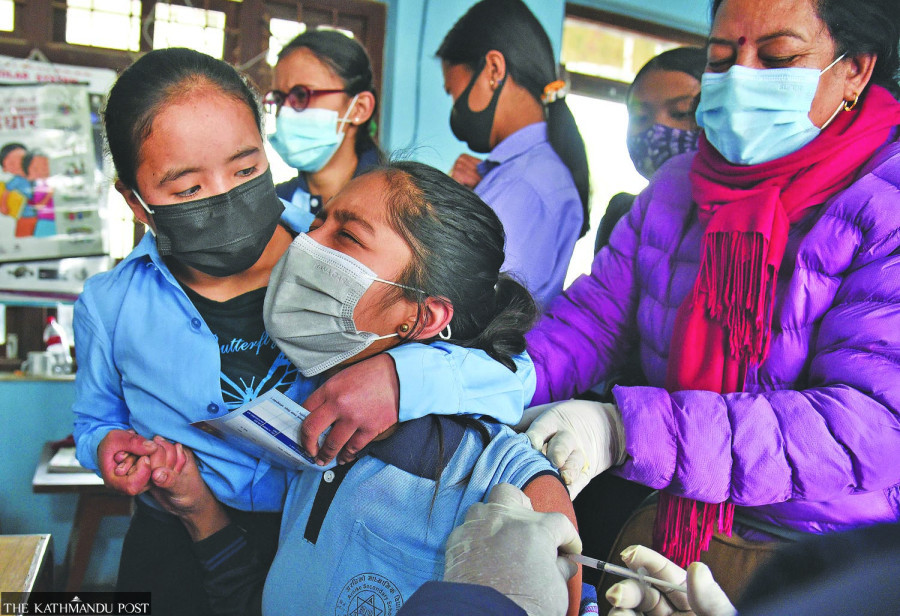Columns
The risks of “Disease X” in Asia
Airborne diseases are more likely to become “Disease X”, which can quickly spread beyond borders.
Dr Sher Bahadur Pun
Many experts believe it is only a matter of time before “Disease X” arrives, and that it is likely to be 20 times more lethal than Covid-19. “Disease X” refers to a currently unknown infectious but potentially lethal agent that could trigger a serious international epidemic. Covid-19 was the first “Disease X” since the term was coined by the World Health Organization (WHO) in 2018. Asia, the world’s most populous continent, will probably be the source/place of the next “Disease X” owing to inadequate infectious disease surveillance and preventive measures.
The WHO has released names of severe emerging infectious diseases with epidemic/pandemic potential: Covid-19, Crimean-Congo hemorrhagic fever, Ebola virus and Marburg virus, Lassa fever, Middle East respiratory syndrome coronavirus (MERS-CoV) and Severe Acute Respiratory Syndrome (SARS), Nipah and henipaviral diseases, Rift Valley fever, Zika, and “Disease X”. However, the avian influenza virus (commonly known as bird flu), which poses a significant threat to humans due to its high mortality rate, has not been included in the list.
There has been an increase in H5N1 human cases in recent years. A few weeks ago, a person in Texas, USA, was found infected with the H5N1 virus after coming into contact with dairy cows, prompting a debate about source-transmission/route and its possible consequences. H5N1, a highly pathogenic avian influenza, was first confirmed in humans causing disease and death in Hong Kong in 1997, while a human fatal case was first reported in Nepal in 2019.
Health policymakers pay little or no attention until there is a sudden rise in hospitalisations or even death. The majority of patients with fever and or diarrhoea usually go undiagnosed in Nepal due to limited pathogens sent for routine laboratory testing. In such cases, healthcare workers are compelled to treat them empirically. In recent years, patients with these symptoms of unknown origin have consistently become the top reason for hospitalisations at the Sukraraj Tropical and Infectious Disease Hospital (STIDH).
Studies have shown that patients with unknown causes of fever and/or diarrhoea are common in Asia (especially in Southeast Asia). Covid-19 (SARS-CoV-2) was initially dubbed a “SARS-like virus”. H1N1pdm09 flu was “Swine flu” before the identification of its pathogen/s and nomenclature. The currently unknown infections/pathogens, observed in Nepal and elsewhere in Asia, have the potential to become “Disease X” and possibly trigger a serious international epidemic anytime, anywhere. Both Covid-19 (SARS-CoV-2) and H1N1pdm09 were declared pandemics approximately 10 years apart.
There are lessens to be learnt from Covid-19, where a significant number of patients died (especially during the Delta wave) due to a shortage of oxygen supply rather than the disease itself. Fever with severe bleeding can lead to hemorrhagic shock and even death if left untreated. Hemorrhagic fever/shock was seen in several patients with dengue-like illness in Kathmandu in 2022. It shows that unknown vector-borne disease/s can become “Disease X” at some point, where adequate/sufficient blood may not be available in hospitals/healthcare centres. The Aedes mosquito, a vector for dengue and dengue-like illness, is well established in Southeast Asian countries, elevating the risk of appearing as the vector-borne origin of “Disease X” in Asia.
“Disease X”, emerging from flu-like illnesses or respiratory tract infections, sounds like a more reasonable prediction of a serious epidemic/pandemic. Covid-19 (in 2019), H1N1pmd09 (in 2009), and H1N1 (known as Spanish flu, in 1918) are some diseases that caused serious pandemics and killed hundreds of thousands of people in the past. Regrettably, it is difficult, even impossible, to prevent the spread of airborne diseases from one person to another as well as from one country to another country, despite strict policy-level control measures and preventive measures.
Flu-like illness is a fever of >38 degrees Celsius and a cough with onset within the last 10 days. It is interesting to mention here that patients with flu-like illnesses are usually found negative for flu viruses. According to the FluNet report (updated on April 15, 2024, WHO), nearly 90 percent of flu-like illnesses were of unknown origin (unidentified), a matter of grave concern indeed. Such unknown respiratory illnesses might, one day, turn into “Disease X” and potentially cause serious epidemics/pandemics worldwide.
To conclude, airborne diseases are more likely to become “Disease X”, which can quickly spread beyond borders in a short time, despite the implementation of strict controls and preventive measures. Increased human-animal interfaces, lab-leak incidents (deadly and fast-spreading infectious agents), genetic mutations of pathogens, drug-resistant bacteria, and climate change are some of the reasons behind the potential appearance of the next “Disease X”. To prevent the yet-hypothetical but potentially lethal “Disease X”, with its concentration in Asia, there is a need for effective surveillance, early identification, strict preventive measures, and vaccine research and development apart from governments making it a top health agenda.




 20.12°C Kathmandu
20.12°C Kathmandu















